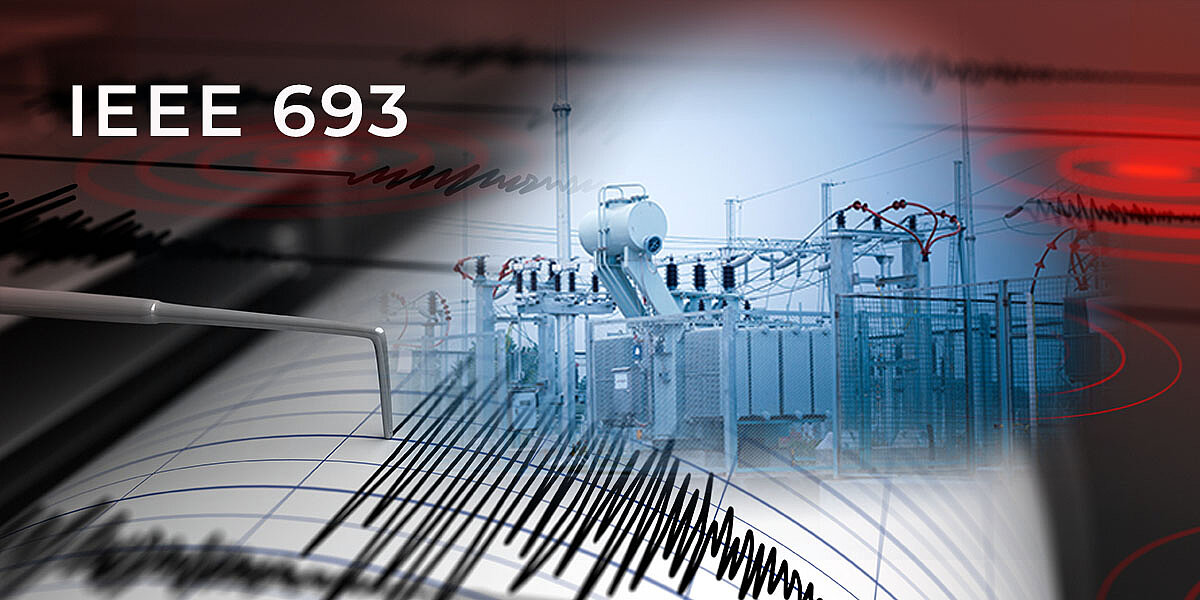IEEE 693: Seismic design for substations and equipment


The California earthquakes of Loma Prieta (1989) and Northridge (1994) caused nearly $300 million in damage to substation equipment alone.
IEEE 693 is an earthquake standard for seismic design specifically of installed equipment in substations, which is increasingly being used by other industries.
The standard allows for qualification through static and dynamic analyses and simulations or appropriate shake table tests.
Shaking table tests are comparatively complex and cost more time and money, as prototypes must first be built and then tested.
If a test is not passed, the cause is not always clear. Here, simulation is more efficient and shows weak points in advance.
Based on the simulation results, critical areas can be optimised so that the requirements regarding earthquake safety are met. For the verification according to IEEE 693, the physical test is no longer necessary, unless your customer insists on it. Then we help you pass the subsequent test on the first try.
The procedure for IEEE 693 is similar to earthquake verifications according to Eurocode, IBC or Ghost. Using quasi-static accelerations up to the standardised IEEE 693 Required Response Spectrum (RRS) method, the same loads can be applied mathematically as are used in the shake tests on the shake table.
What are the most common components that are verified with the help of this standard (IEEE 693-2018)? The following list does not claim to be complete, but gives a rough overview of the current use of this standard in our company:
- Terminations
- Battery backup systems (all types of batteries, incl. lithium-ion batteries)
- Electrical systems, sockets, insulators
- Capacitive voltage transformers (CVTs)
- Air circuit breakers (knife switches)
- Pump skips
- Control systems and switch cabinets
- Power distribution and supply equipment
- Transformers
- Transformer substations
- Vacuum switches (vacuum breakers)
- Pre-charging separators
- Heat exchangers, table-top coolers, V-shaped recoolers
- etc.
We are also happy to carry out the numerical verifications according to IEEE 693 for your components and support you if a verification cannot be provided.
Yours Stefan Merkle

PS: Do you need an earthquake verification according to another standard? Of course we can help you with that as well. Only we don't have a shaking table, it's too big for our office.
PPS: Report in German and English? No problem! Just tell us in advance which report language(s) you would like.